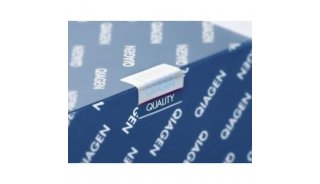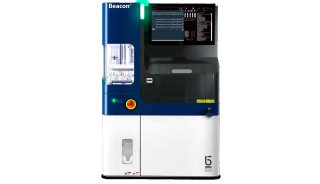Protease assay
实验概要
In certain fruits, such as pineapples and mangoes, the flesh contains protein-digesting enzymes (proteases). These may play a part in helping to soften the fruit tissues as the fruit ripens, making it even more attractive to animals that might disperse the seeds. So perhaps the activities of these proteases enzymes will increase during the ripening process.
Applications of plant proteases, such as ‘bromelain’ from the stems and fruits of pineapples, include uses in the pharmaceutical industry as a blood anti-coagulant, and in the prevention of proteinaceous hazes in chill-proof beers.
实验步骤
The assay:
Protease enzymes are added to a milky colloidal suspension of
egg albumen. As the protease enzymes digest the suspended particles of
proteins, the mixture becomes more transparent. The absorbance changes
in the reaction mixture are followed with a colorimeter. The protease
content, for example in extracts of fruits, can be assayed by measuring
the rate at which the solution of egg albumen and extract becomes
clearer.
Preparation of the egg albumen colloidal suspension (enzyme substrate)
1.Separate the white of a single egg into a 250 cm3 beaker and add 150 cm3 tap water, stirring the mixture thoroughly. The mixture becomes quite cloudy as a result of the denaturation of some of the egg albumen by the water.
2.Place the beaker on a tripod and gauze and heat with a bunsen until the mixture boils, stirring it regularly.
3.Allow the mixture to cool, then decant it through two or three
layers of muslin into another beaker. This creates a homogenous milky
colloidal solution.
Carrying out the reaction:
1. Select a test-tube that fits into the colorimeter. Add 2 cm3 of an appropriate buffer (e.g. pH7), followed by 2 cm3 of the albumen substrate solution and 1 cm3 of fruit extract.
2. Mix the contents of the colorimeter tube, and place it in the colorimeter (previously zeroed using a tube with 4 cm3 buffer and 1 cm3 of fruit extract). Read the absorbance and note the time.
3. Place the reaction mixture(s) in a water bath at 30°C to promote the activity of any protease enzymes present.
4.Take further absorbance readings at regular time intervals (say every 5 or 10 minutes), until no further change (decrease) in absorbance is detected.
5. Plot a graph of the change (decline) in absorbance against time.
Measuring the time taken for a 50% reduction in absorbance value gives
an indication of the protease activity of the original fruit extract.
Ideas for investigations with this system (with fruits and vegetables):
1.Follow the changes in protease enzymes during ripening
2.Compare the effects of pH on proteases from different fruits
3.Compare the effects of temperature on proteases from different fruits
4.Investigate the presence of protease-inhibitors in the seeds of legumes
5.Monitor the release of amino acids from the digested proteins, using paper chromatography




















